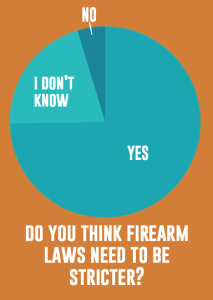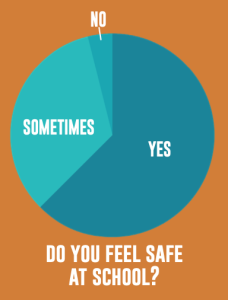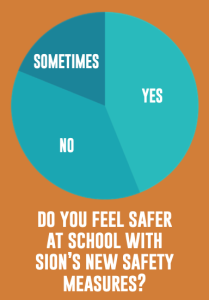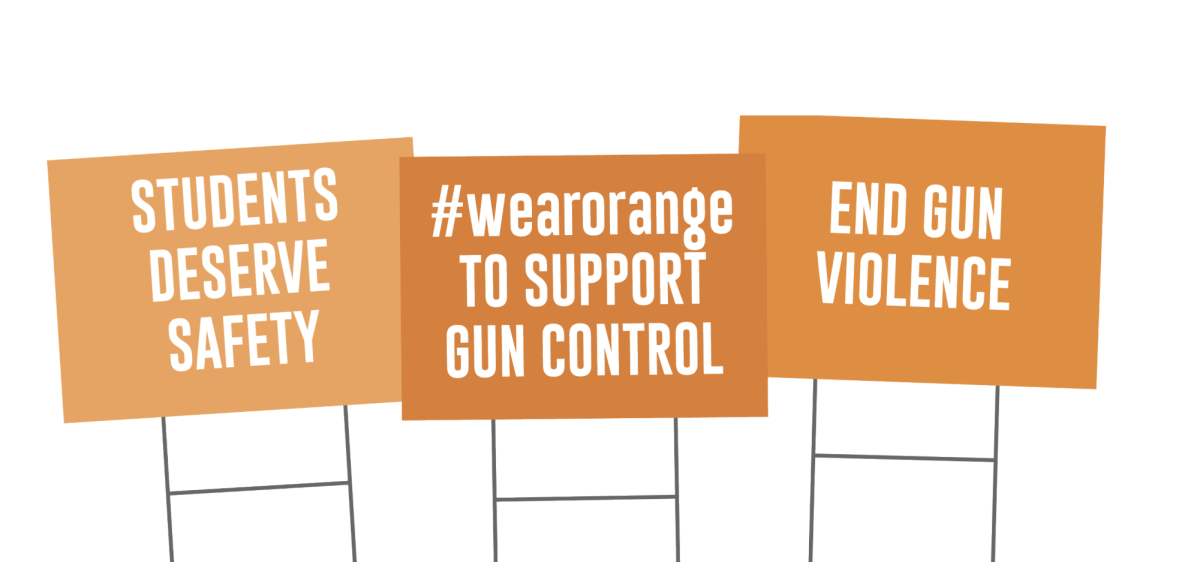The Second Amendment has long been debated because of its unclear wording and abundance of commas. While gun owners and gun rights advocates maintain that the amendment’s sole purpose is to guarantee citizens their right to own and use weapons, those in support of gun control cite the “well regulated Militia” part as proof of its irrelevance.
Although the Second Amendment is still regularly discussed and its true meaning remains unknown, what we can be sure of is its impact on the United States. Lawmakers from both parties are hesitant to act on gun violence. Meanwhile, hundreds of mass shootings occur each year, and new technologies are making it easier than ever to purchase or even make your own firearms. Children as young as five have to participate in intruder drills at their school because the reality is that school shootings are a scenario that students and teachers need to be ready for.

“There’s a lot of people who are using the Second Amendment as an excuse to own, like, an assault rifle, which I think is really unneeded right now. I feel like we’re trying to fight the problem with more guns,” freshman London Trahan said.
Proper gun control laws are the right thing to do here, but neither party is willing to put in the work to create these policies.
Unlike most issues, both presidential candidates have a similar stance on gun laws. Presidential candidates Kamala Harris and Donald Trump have both mentioned that they own guns, and neither candidate has proposed anything that resembles a firearm ban, contrary to the claims made by Trump during the presidential debate.
“She is destroying our country. She has a plan to defund the police. She has a plan to confiscate everybody’s gun,” Trump said in the debate, which aired on ABC News on Sept. 10.
Ever since current president Joe Biden announced he would no longer be running for reelection and Harris stepped in in his place, Harris has made her stance on guns very clear.
“Tim Walz and I are both gun owners,” Harris said in that same debate. “We’re not taking anybody’s guns away.”
Throughout her presidential campaign, Harris has repeated that she herself is a gun owner, likely to appeal to more conservative voters. She’s said that she believes the current discourse surrounding guns is unproductive and unnecessarily polarizing, and that she herself is pro-gun ownership, but also supportive of regulations.
“We are being offered a false choice,” Harris said to CNN in 2019. “You’re either in favor of the Second Amendment or you want to take everyone’s guns away. It’s a false choice that is born out of a lack of courage from leaders who must recognize and agree that there are some practical solutions to what is a clear problem in our country.”
Trump has historically been very vocal about gun rights, and his following is largely made up of rural voters, who, according to recent research, are more likely to own guns and therefore more likely to support a candidate who is more defensive of gun ownership.
According to Pew Research Center, 35% of Trump’s voters in 2016 were from rural areas, compared to only 19% of 2016 Democratic presidential candidate Hillary Clinton’s voters. In a different study, Pew Research Center found that people from rural areas were far more likely to be gun owners than people from suburban or urban areas, with a total of 46% of rural respondents saying that they owned a gun.

Conversely, Harris’ voters are expected to be from more urban areas, like Clinton’s were in 2016. People from urban areas are less likely to own a gun, and Pew Research Center found that only 19% of respondents from urban areas owned a firearm.
Trump has been endorsed by the National Rifle Association (NRA), one of the nation’s most powerful political organizations. The NRA lobbies heavily against gun control, spending millions each election cycle to support pro-gun candidates. According to OpenSecrets, the NRA has spent over $140 million directly funding the campaigns of pro-gun candidates since 2010.
Both candidates have stated that they support red-flag laws (laws that restrict access to guns for people deemed threats) and background checks for those looking to buy a gun, though Trump later rescinded both of those statements after receiving criticism from the NRA, according to the Washington Post.
According to the Gun Violence Archive, there have been over 400 shootings in the United States in 2024, and it’s very unlikely that sound regulations will be put in place anytime soon to curb the growth of that number. Shootings like Columbine (1999), Sandy Hook (2012) and Uvalde (2022) cannot be described as anything other than tragedies, and they happened because our leaders were not prioritizing gun safety, with many preferring to quietly accept campaign money from the NRA instead. If you were to look at all the school shootings in the U.S. on a timeline, you’d notice a pattern: they have not slowed down at all. It’s clear nothing is being done about gun violence because it keeps happening, even over 20 years after the shooting at Columbine High School in Colorado. Instead, we just gain more tragedies to mourn.
Unfortunately, children are growing up in a world where schools, a place of safety and learning, are now a threat. Sion, like many schools in the area, has experienced threats of violence multiple times.
While both candidates may support some gun safety regulations, it’s clear neither party is willing to do enough to truly get to the core of the issue: citizens of the United States are still worried for their safety at school, sporting events, celebratory parades, the mall and so much more, and this will continue to be the case until leaders from both parties work together to create comprehensive solutions to this issue.
It’s difficult to believe that gun violence events could take place in Kansas City, but there have been countless threats or acts of gun violence in the area spanning over ten years. Sion students are unfortunately not unaffected by these. Senior Aubrey Nichols was exposed to the effects of threats of violence at a young age.
“I was at dance class when I was seven years old, and someone on the floor above the dance studio was seeing a therapist and threatened to shoot up the dance studio. A SWAT team was called and all the dance girls had to sneak out of the studio, but when we got out the front doors, the SWAT team was lined up on either side of the walkway, 15-20 of them on either side, with guns taller than I was pointed at the doors,” Nichols said. “We then had to sprint through a forest to get to a safer neighborhood. All I remember is getting my jazz shoes muddy and worrying they would be ruined.”
Threats of violence should not be something that children in dance class or school need to worry about. But even Sion has faced such danger. This year, Sion has increased safety measures due to recent threats of violence against the school, but these were not the first instances of Sion students being affected by lockdowns.

“During the Thursday of Puffs tech week, there was an intruder at Avila University. At first we didn’t know if the person was armed. Everyone involved with Puffs had to stay in the Black Box theater. Many of us didn’t have our phones with us because we had to keep them in the green room,” senior Elwyn Patterson said. “Eventually they found out that the intruder was not armed, but had barricaded herself in a classroom full of students.”
Although the intruder was not armed, the students in the theater did not know that until after the event occurred. This uncertainty is what most of the students involved remember when recalling this incident.
“People were crying, calling their parents and in disbelief. I called my mom and told her the situation; I can still remember the conversation vividly. I was whispering, but she couldn’t understand me at first,” senior Kate Schneeberger said. “I kept repeating we were in lockdown but she didn’t know what I was saying and thought I was one of my brother’s friends pranking her. When she finally understood what I was saying, she was silent. She didn’t want to get off the phone, but I had to because it was my friend’s phone.”
After the lockdown ended, director and theater teacher Maggie Killian decided to end the rehearsal early rather than continue to run the show until the end. Students went home shaken, reflecting on the potential gravity of the situation that had taken place.
“It dawned on me then that I could have been in a lot of danger. I might not have been able to tell my parents goodbye. I went home with a friend, who took a couple other people home as well. It was only when we got in the car and started driving that I began crying,” Patterson said. “The only thing I can remember saying is, ‘I don’t want to be another statistic.’ I hate that looking death in the face like that is commonplace. I hate that what happened to us that night is pretty tame, all things considered.”
This editorial reflects the views of the Le Journal staff. Staff members voted unanimously in favor of this editorial.



